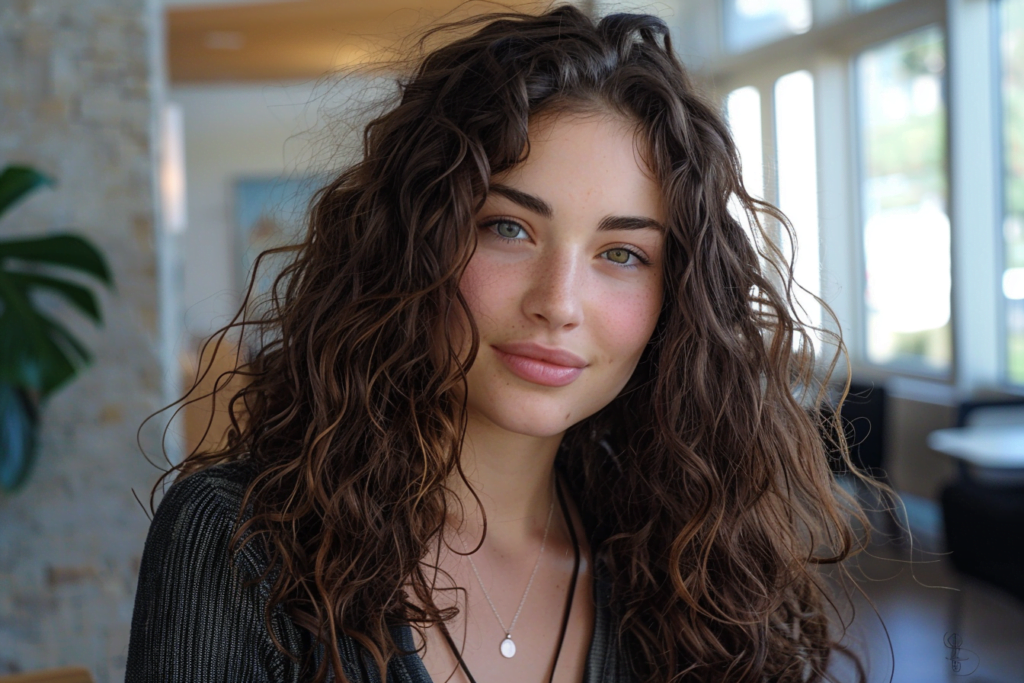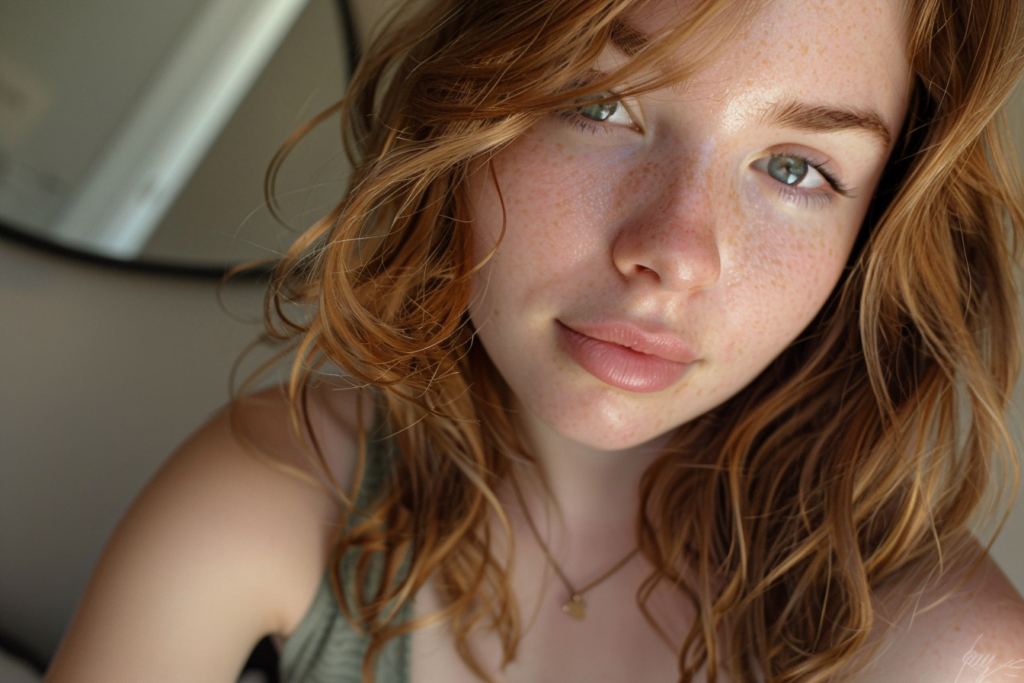Understanding the kind of hair you have is the basis for a personalized hair care regimen that will nurture and enhance your natural hair texture. The common types of hair are straight, wavy, curly, and coiled.
Each group does not just reflect how one’s hair appears but also suggests what it needs to be taken care of as well as styled accordingly. These categories are also divided into subcategories based on curl pattern and texture in order to further refine strategies in caring for any of the hairs.
Here is a guide to help you determine your own type of hair so that you can make better choices about caring for it.
Understand Hair Types

The Andre Walker Hair Typing System is widely acknowledged as an effective tool for classifying human hair into four major types with their individual attributes and sub-categories.
By using this system, people can identify their specific type among others which they can use to develop a framework upon which they will make decisions regarding personal care solutions and styling options.
Here is each Andre Walker system’s breakdown of all its different kinds of hair types:
Type 1 Hair: Straight
- Type 1A: This represents the finest and thinnest type straight hair without any visible wave or curl; soft, glossy but oily quickly.
- Type 1B: Slightly bent medium-textured straight hair that has more body hence very versatile in stylinjg.
- Type 1C: It is coarse thick straight type with some wavy features; hard to curl it due to its fullness from both volume and density.
Type 2 Hair: Wavy
- Type 2A: Fine thin textured hair that forms loose “S” pattern making it easy to manage and that can be blow dried straight without much effort.
- Type 2B: With more pronounced waves forming S-shaped patterns this subtype has medium textured strands often described by some women as having frizzy results after styling it.
- Type 2C: It is a thick and coarse wavy hair which shows lots of waves. This type takes long to style among all wavy examples and has a tendency to become frizzy.

Type 3 Hair: Curly
- Type 3A: Its main feature is loose, large curls with a distinct s-pattern. It often appears shiny and the curls are well defined.
- Type 3B: The tight, springy ringlets that make up this subtype form an S-shape that have immense volume and texture.
- Type 3C: Tight corkscrew-shaped coils define this hair type. This type is characterized by high density with massive volume as well as high porosity.
Type 4 Hair: Coils
- Type 4A: Tightly coiled hair which has an “O” shape; soft and fine textured commonly seen in African-American women.
- Type 4B: A zigzag patterned hair having less defined coils compared to those in type four (4) A hence looks like cotton fluff.
- Type 4C: This one has densely packed coils with no visible curl pattern; it is more closely related to having a very tight “O” shape. It is the most delicate of all types requiring tender handling in order not to break it off easily.
When you know your hair type via the Andre Walker’s Hair Typing System, you will be able to adopt care practices that specifically cater to what it naturally does when left unkempt or styled differently. This will result in healthier, more manageable, better-looking locks on your head.
Other Hair Typing Systems

The world of hair care is a place full of surprises; there are many different hair typing systems other than the well-known Andre Walker system. On the other hand, these alternative systems go into things like texture, density, porosity, scalp health and even the shape of your follicles. Each one of these offers a unique perspective on hair care stressing the importance to understand your specific hair needs and characteristics.
Alternative Hair Typing Systems
1. Texture-Based Classification: Texture-based classification categorizes hair as fine, medium or coarse by focusing on how thin each strand is. Finehairsthatcanbee
Thickness: Thickness, unlike diameter, is the amount of hair on your head and it ranges from fine to thick. You can measure the circumference of your ponytail hairs to determine this. It may be helpful to consider this when considering whether you have low, medium or high density hair.
Hair Follicle Shape
The shape of your hair follicle has a major effect on how your curls form naturally. Straight hair comes out through round, symmetrical follicles while oval-shaped follicles are responsible for wavy or curly hair and more irregularly shaped/ flatter ones contribute to coily hair. For examples the strands near the root of your head will help you see what the follicles look like.
Texture and Curl Pattern
Texture: The width of individual strands determines this aspect and can be characterized as being fine, medium or coarse textured in nature. Consequently it affects how well your Hair styles can stand.
Curl Pattern: The texture of one’s curl is an important determinant for his/her coarseness; straight (Type 1), wavy (Type 2), curly (Type 3) or coily (Type 4). By observing how they behave after washing and drying them naturally, it becomes simple for one to single out what kind of curl patters his/her individual locks possess.
Porosity
This information can help you choose products that best meet your moisturizing needs because porosity indicates how well moisture gets into and stays in the hair shafts. Porosity can also be evaluated through floating test by putting a clean strand of dry hair into a glass full of water.
If it quickly becomes soaked due to cuticles with opened pores then that means its porosity level is very high whereas if not then its porosity level is low when compared to that glass.
High porosity results in immediate sinking because open cuticles allow seepage while low porous one floats since closed cuticles prevent absorption by rejecting water.
Therefore, by analyzing these factors, one can understand the nature of their hair type as a whole. This will help you purchase the appropriate products to maintain the healthy, strong and manageable hair.
Caring for Different Hair Types

Your hair health and beauty relies on a well-crafted haircare routine that prioritizes proper hydration as well as treatment which is specifically made for your unique type of hair. Irrespective of whether you have straight, wavy, curly or coily/kinky hair, the secret to having glowing and nourished strands lies in knowing how to choose and apply products that complement distinct features of your locks. This article looks at different hair types with focus on hydration, frizz management and breakage prevention.
Haircare and Hydration
Hydration is crucial for maintaining any kind of hair type in good condition. You could substantially improve the appearance and health of your manes if you integrate moisturizers into your daily regime.
Straight Hair: Look out for hydrating options that are lightweight so as not to burden your tresses. Water-based mousses or sprays can provide some moisture without making your locks oily.
Wavy Hair: Leave-in conditioners plus creams will give wavy hair an essential boost in moisture levels while improving its natural wave pattern without adding extra weight.
Curly Hair: A mixture of creams and gels is recommended for curly hair because they also make it moist while helping describe and hold curls by reducing frizz.
Coily/Kinky Hair: For the most tightly packedated hairs, go for heavy creams as well as butters which provide intense moisture that keeps coils plus kinks soft and manageable.

Managing Frizz and Breakage
Each type has its own ways how to handle frizz, prevent breakage hence ensuring healthy strong hairs.
Straight Hair: Choose light styling aids; this means reduced shampooing so there is no loss in moisture which causes dryness leading to frizzy conditions. Also using silk or satin pillowcases reduces friction thereby avoiding breakages.
Wavy Hair: To avoid stripping off natural oils and moisture, go for a mild shampoo and make sure to condition or comb your hair when it is wet to avoid breakage of strands.
Curly Hair: Regular deep conditioning treatments plus detangling gently with wide-toothed combs helps in keeping curls intact while maintaining frizz at minimum levels hence reducing breakages.
Coily/Kinky Hair: You need to Deep condition and use heavy moisturizers. Use of heat styling tools should be minimal so as not to dry out even more. Wet conditioned hair is best detangled gently.
When you establish a regular haircare regime that suits the demands of your specific hair type, you will have the assurance that your strands shall always remain hydrated, frizz shall be reduced and damages avoided. Remember that consistency is key in gaining and retaining better health as well as appealing aesthetics of one’s hairs. Adjusting your routine to cater for the needs of your hair locks can help bring ease into them, making it easier for you to manage them effectively and make them livelier.
Common Hair Type Combinations and Solutions

Navigating through the complexities around combination hair types comes with its own unique challenges since they have attributes from different kinds of hairs. Whether you are dealing with straight roots but curly ends , oily scalp partnered alongside dry strands or any other mixed scenarios, customization becomes very important on matters pertaining to hair care techniques.
Understanding what drives these varied requirements in managing our own crowns makes a difference between frustration and fulfillment.
The following are few strategies applicable for some typical combination types providing solutions that would restore harmony and attractiveness into those multi-faceted manes:
Fine, Oily Scalp with Dry, Damaged Ends
Thermal Protection: Include a lightweight, daily leave-in thermal spray to shield your fine hair from heat while adding moisture.
Targeted Conditioning: Use a nourishing conditioner only on the dry, damaged ends of your hair. Such an approach does not burden the scalp with too much moisture, but satisfies where hydration is required.
Select Product Placement: So avoid putting heavy oils or deep conditioners like this at the roots as it can lead to greasy looking hair. Instead focus more on mid-lengths and ends.
Straight Roots with Curly Ends
Curl-Enhancing Products: Opt for curl enhancing products that will not weigh down or flatten your locks by concentrating on your roots.
Diffuse to Define: When blow-drying, affix a diffuser in order to encourage and define curls making sure that you don’t flatten them out by applying too much heat from the root area.
Styling for Cohesion: Look into styling methods like braids or twists which can bring together different texture of hairs giving you a unified look that embraces both straight and curly characteristics.

Curly Hair with Straight, Damaged Ends
Deep conditioning treatments: indulging in regular deep conditioning sessions helps inject some much needed moisture into your hair, thereby assisting in reviving the natural curl pattern in damaged areas.
Minimize Heat and Chemicals – Reducing use of heating tools and chemicals will go a long way in preventing further damage to already vulnerable ends.
Trim for Uniformity – Having a trim done removes dead straight edges creates consistency within curl patterns thus making it easier to manage and style hair properly as well as achieve desired looks effortlessly.
Embracing this unique combination means adopting precision sensitivity towards its peculiar needs. These specific tips will help navigate through problems faced by mixed women such as different texture of their hairs, revealing natures glory within each strand.
Styling & Care Tips For Every Hair Type

Knowing how best to maintain and style your hair depending on its specific type can greatly improve both the look and overall health of it. Regardless of your being straight, wavy, curly or coily, each one has different needs in order to achieve a better appearance and feel. Below are customized styling & care tips for each hair type to help you optimize the natural beauty and keep it healthy.
Straight Hair
Moisture & Volume: Striking a balance is key, thus use light shampoos and conditioners which will not weigh down your hair.
Styling – Choose an appropriate heat protectant to shield your hair from high temperatures. Use low heat from flat irons or blow dryers in order to minimize breakage. For extra fullness at the root area apply volumizing mousse or root lift spray.
Wavy Hair
Moisturization: To avoid frizz, maintain well moisturized tresses through gentle sulfate free shampoos and nourishing conditioners.
Styling – Damp hair can be styled lightly with curl enhancing creams/gels that have mild holding capability. If you prefer more defined waves without frizzing then let them air dry or use a diffuser attachment on your blow dryer.
Curly Hair
Hydration – Keep curls well-sustained with sufficient amounts of moisture by washing them using sulfate-free shampoos as well as using hydrating conditioners/hair masks.
• Styling: Apply a leave-in conditioner or curl-defining cream to wet hair. Detangle gently with a wide-tooth comb or your fingers, and dry using a diffuser or air dry to keep curls intact and minimize frizz. Avoid manipulating too much to maintain the natural shape of your curls.
Coily Hair
• Intensive Moisture and Protein Treatments: Coily hair thrives on hydration and strength. Opt for hydrating, sulfate-free shampoos and deep conditioning treatments. Add some protein treatments into the mix in order to make your hair more elastic.
• Styling: Gently detangle in sections with a wide-tooth comb or detangling brush. Apply leave-in conditioner followed by a curl-defining cream or gel to keep coil definition. Think about using protective styles that are good for your hair as well as reduce heat styling tools dependency.
Adapting your hair care and styling routine to fit your hair’s specific needs can transform its health and enhance its natural beauty. Follow these tips to create a pattern that celebrates and nurtures you special kind of head, this will ensure great locks which will be become healthy in time.
Frequently Asked Questions

How do I know what my hair type is?
Hair texture, thickness, and curl pattern should be checked when identifying an individual’s own type of hair . A quiz found online could be helpful in knowing one’s hair type better since it provides personalized insights . Alternatively , the mirror test counts hairs on the head so as to determine how dense they are . Knowing one’s own type of hair makes it easier for her / him while choosing appropriate products such as shampoos and conditioners for her / his type .
Which Hair Types are Rare?
All sorts of hairs exist but some types may be more common than others. Less frequently encountered examples include 1C (straight yet coarse), 4C (with very tightly coiled strands with minimal curl definition). However, remember that the rarity of a hair type may vary considerably between populations, such that what might be rare in one community could be common in another.


